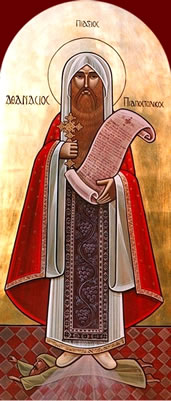The Dating of the 25 Canons of Antioch
These 25 canons have traditionally been associated with the Council of Dedication at Antioch in AD 341. Recent scholarship, however, has produced convincing arguments against such a dating (see Hess, Canons of Serdica, pp. 145-150). The list of subscriptions attached to the canons in the manuscripts does not correspond with records of attendance at the dedicatory council. Bishops known to have attended the council in 341 were not listed among the subscribers to these canons, while other bishops not in attendance are listed. In some instances, subscribers had actually died prior to the Council of Dedication in 341, for example Eusebius of Caesarea who died in 339. Assigning these canons to 341, therefore, is clearly untenable.
While differing interpretations are possible, the list of subscriptions attached to these canons seems to favor a dating within a few years of the Council of Nicaea in 325. The list of subscriptions to the canons corresponds closely with the attendance records at the earlier Council of Antioch in 325, and the proportion of bishops at the two Antiochene councils who were also present at Nicaea is strikingly similar.
In light of these observations, a likely theory is that these canons resulted from the Council of Antioch c. 327 or one following closely after it. Eustathius of Antioch had recently been accused of immorality and deposed (though in reality he was likely deposed for his strong opposition to the Arian party), and the succession of bishops after him had proven disorderly. These 25 canons appeared, therefore, to clarify the authority and relationship between various clergy and thereby to avoid the problems experienced after Eustathius’ removal.
JCB
No Responses yet
